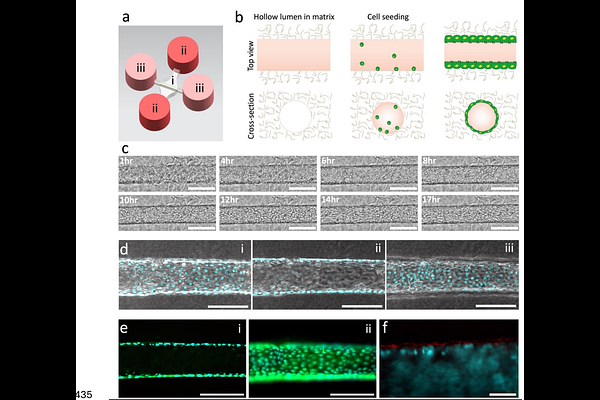A breast Duct-on-Chip model for emulating invasive ductal carcinoma and testing therapies

A breast Duct-on-Chip model for emulating invasive ductal carcinoma and testing therapies
Jouybar, M.; de Toonder, J. M. J.
AbstractThere are not many in vitro models that closely mimic ductal carcinoma in vivo. We present a novel breast duct-on-chip model designed to simulate ductal carcinoma in situ as well as invasive breast ductal carcinoma. This model features a tubular channel encapsulated in collagen and lined with normal epithelial cells. A basement membrane layer forms between the epithelium and the collagen, expressing basement membrane proteins. Invasive breast cancer cell lines are introduced into the breast duct to simulate ductal carcinoma. We observe two distinct lateral migration regimes that depend on the initial number of cancer cells within the duct. Additionally, the morphology of the breast duct and the invasion distance varies between the two regimes. Furthermore, we examine the effects of two widely used chemotherapies, Doxorubicin and Paclitaxel, on the invasion behavior of breast cancer cells within this model. The introduction of these drugs alters the invasion patterns of cancer cells, with Paclitaxel inhibiting invasion in 30% of tests. Notably, in the absence of treatment, all tests result in single-cell invasion. Our findings also highlight the dynamics of intraductal migration of cancer cells in non-invasive DCIS, revealing flow-like movements of cancer cells along the epithelial layer. This work establishes a valuable platform for investigating the mechanisms of cancer invasion from the epithelium and basement membrane, as well as evaluating chemotherapeutic strategies and testing novel cell-based therapies. It can have significant implications for understanding the dynamics of early-stage ductal carcinoma for improving treatment protocols of existing chemotherapies, and for developing and advancing novel therapies.